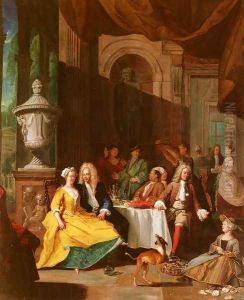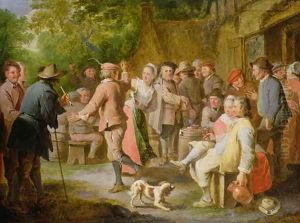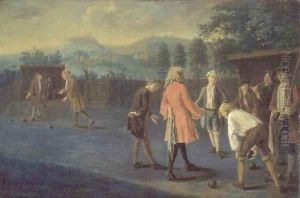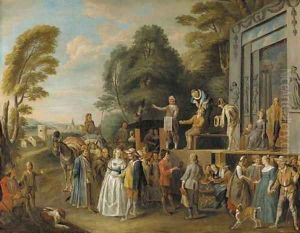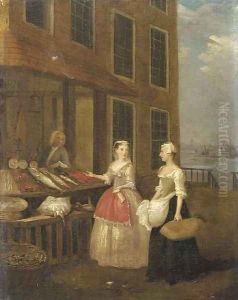Pieter Angellis Paintings
Pieter Angellis, born in 1685 in Dunkirk, then part of the Spanish Netherlands, was a painter who developed a significant reputation throughout Europe in the early 18th century. His work primarily focused on genre scenes, landscapes, and still lifes, reflecting the influences of the Dutch Golden Age despite his Flemish heritage. Angellis's artistic journey began in his hometown, but his quest for mastery and recognition soon led him across Europe.
After initial training in Dunkirk, Angellis moved to Antwerp to further his studies. Here, he was heavily influenced by the Flemish Baroque tradition, which is evident in his early works. His talent and ambition drove him to travel extensively, seeking inspiration and patrons. He spent significant periods in Paris, where he absorbed French artistic tastes, and in Italy, particularly in Rome and Venice, where the Italian masters profoundly impacted his style.
By the mid-1710s, Angellis had established himself in London, where he found a welcoming market for his paintings. His works from this period demonstrate a remarkable blend of Flemish detail, Italianate landscapes, and a keen understanding of British tastes. Angellis's ability to adapt and merge these various influences made his work highly sought after by collectors and the nobility. His scenes of everyday life, often imbued with a sense of humor and moral undertones, were particularly appreciated.
In addition to genre scenes and landscapes, Angellis was known for his skill in portraiture. He captured the likeness and personality of his subjects with a delicate realism, which further enhanced his reputation. Despite his success in Britain, Angellis continued to travel, working for patrons in the Southern Netherlands and France.
Pieter Angellis's contribution to 18th-century European art lies in his unique synthesis of regional styles, making his work a bridge between the Baroque and the emerging Rococo movement. He passed away in 1734, leaving behind a legacy that has been appreciated by art historians for its diversity and artistic integration. Though not as widely recognized today as some of his contemporaries, Angellis's paintings continue to be admired for their vibrant detail, compositional skill, and the insight they provide into the cultural exchanges of his time.

